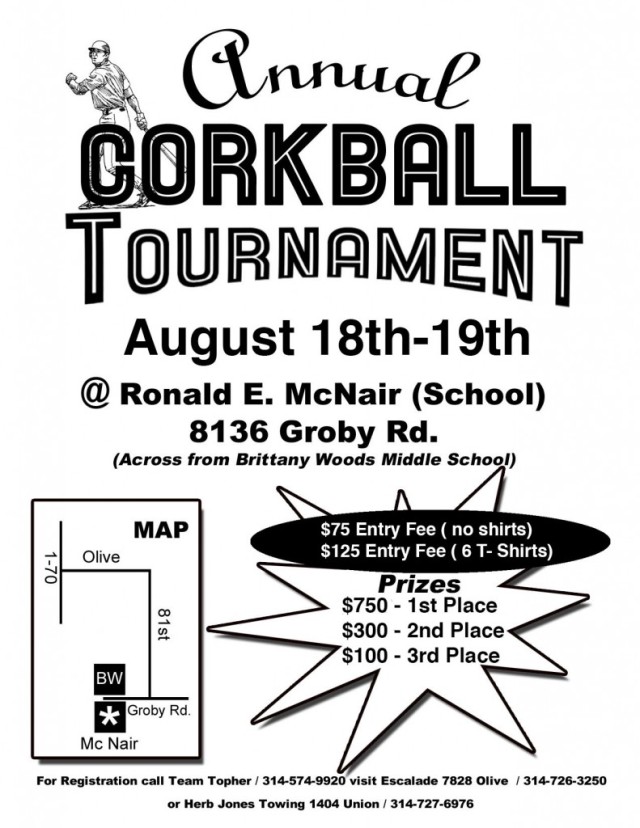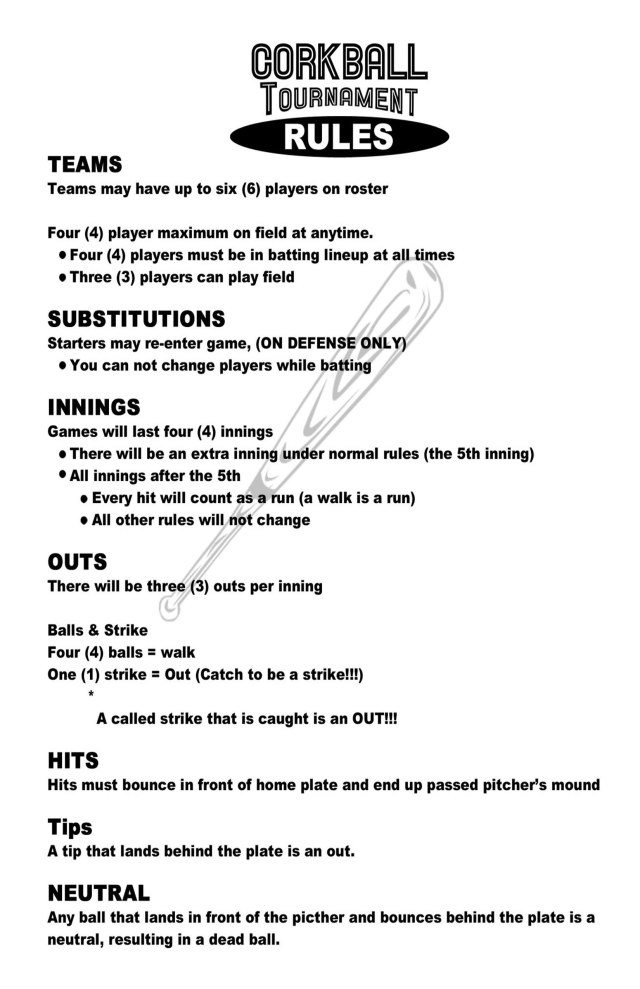Kudos to Steve Givens! From his blog:
Welcome to the first installment in an occasional new series of blogposts called “Games We Played.”
The idea behind this series is to — in a quick and hopefully fun way — pass on to my grandchildren’s generation the games we played as kids. And by games I don’t mean Monopoly and Chinese Checkers and I certainly don’t mean any game that can be played sitting on the couch with a computer, tablet or phone in your hands.
I’m talking about the games we played outside with friends in the neighborhood. For me, that was in the late 1960s and early 1970s in a North St. Louis neighborhood called North Point, nestled up against Walnut Park, Baden and the St. Louis County line with Jennings. But what I’ve learned talking to some friends and family about these games is that our memories of the rules of these neighborhood and schoolyard games are widely inconsistent. Even the names of the games varied by when and where they were played.
But that’s kind of the point. We all remember the games and the rules differently not because we’re all old people losing our memories — although that most certainly is true in the case of some of my friends (naming no names here and present company excepted) — but because there were NEVER any firmly established rules to begin with. These were the games we made up ourselves or inherited from older siblings and changed to meet our own needs and abilities. Making up or adjusting the rules was all part of the game and, I think, that made us smarter, more resilient and more creative kids.
Today I begin with THE seminal game of my childhood. Fuzzball was one of many, many derivatives of baseball that we played in North Point. No doubt kids in other parts of the country played some version of this game, but this one has a distinct St. Louis heritage because its roots are tied to another St. Louis-born game called corkball, which was originally played with broomsticks and roundly carved and tape-wrapped pieces of cork from beer barrel bungs. That game became so popular that official bats and balls were eventually manufactured to meet the needs of the many who played it. According to a Wiki page, the game was played in the streets and alleys of St. Louis as early as 1890, and as time went on the game travelled around the country as St. Louis servicemen taught it to their buddies during World War II and the Korean War.
But enough about corkball, other than to say that little ball was hard and could blacken an eye or knock out a few windows if not played in a big old field (like the corkball fields at several city parks like Hickey Park in Baden) or inside a rectangular cage like those that popped up adjacent to taverns around town. It also hurt like a dickens when it hits you.
So for brevity, which is already waning I realize, let’s just say that in the interest of safety, the cost and hassle of window replacement and childhood innocence, someone eventually replaced the corkball with a tennis ball, which is, of course, how fuzzball got its name. The game could now be played in backyards, alleys and schoolyards without incurring the wrath of neighbors and principals. Usually. By the way, some kids burnt the fuzz off the ball to make it go faster.
+ The game was usually played with four players, two to a side, a pitcher and a catcher. There were no bases to run. It was simply a game of pitching and hitting. Here are the rules as we played it:
+ There’s no ump so no “called” balls and strikes. Just throw the ball over the plate.
+ Two strikes and you’re out.
+ One strike and you’re out if the catcher cleanly catches a swing and miss.
+ Foul tip behind the plate and you’re out. And by “plate,” I mean whatever was laying around, usually someone’s glove or jacket.
+ Foul tip caught by the catcher is a double play, if there is an “imaginary runner” on base. More on this in a minute.
+ Ground ball or fly ball caught by either player is an out.
+ Ground ball bobbled or past the pitcher is a single.
+ That single gives you an imaginary runner on base, and these “ghosts” move around the base path one base at a time with subsequent hits. A double would move the runner two bases.
+ See rule about double plays above.
+ A pop fly or line drive past or over the pitcher’s head is a double.
+ If you’re playing in a schoolyard with a fence, over the fence is a homerun and off the fence a triple.
+ If there’s no fence, you can designate anything you want as the homerun marker, of course.
Three outs and you switch sides. If the innings seem to be passing too quickly, you can always call for “double innings,” but any imaginary stranded runners do not get to stay on base when you begin the second set of three outs. Unless, of course, you change the rules.
That’s it. You can play with more kids and put people out in the field. You can play with just three and just rotate between pitcher, catcher and hitter. You can do what you want.
Until next time:
Get outside (when you can)
Play with your friends (when it’s safe to do so)
Make up your own rules.
Most importantly, have fun.






 Fuzzball is the classic street game of St. Louis. The game is derived from forms of corkball and bottlecaps, both games that were played on the city’s streets in the ’20s and ’30s. The game is relatively simple, a sort of lazy man’s baseball. This traditional game has survived the evolution of the urban sport, and has survived on its own merits. It is easy to play, needs few players and has a simplified strategy. Just as in corkball, the game consists (in its basic form) of a hitter who uses the skinny, broom-handle style bat and a pitcher who uses the “fuzzy” tennis ball. This short form allows games to be played with as few as two people, but on occasion, fielders and catchers may fill out the team. The strategy is simple. The field is laid out in consideration of the particular design of a schoolyard, with the emphasis on the pitching and hitting. The batter has five balls and two strikes, with schoolyard rules of outs being tip fouls, caught on a strike or caught on the fly by the pitcher. There is no running, and the number of bases taken in a hit depends on where the ball lands.
Fuzzball is the classic street game of St. Louis. The game is derived from forms of corkball and bottlecaps, both games that were played on the city’s streets in the ’20s and ’30s. The game is relatively simple, a sort of lazy man’s baseball. This traditional game has survived the evolution of the urban sport, and has survived on its own merits. It is easy to play, needs few players and has a simplified strategy. Just as in corkball, the game consists (in its basic form) of a hitter who uses the skinny, broom-handle style bat and a pitcher who uses the “fuzzy” tennis ball. This short form allows games to be played with as few as two people, but on occasion, fielders and catchers may fill out the team. The strategy is simple. The field is laid out in consideration of the particular design of a schoolyard, with the emphasis on the pitching and hitting. The batter has five balls and two strikes, with schoolyard rules of outs being tip fouls, caught on a strike or caught on the fly by the pitcher. There is no running, and the number of bases taken in a hit depends on where the ball lands. The schoolyard of Kennard Classical Jr. Academy in South St. Louis is the site of what is called the “Fenway of fuzzball fields.” The back wall of the lot is akin to the famous green monster of Fenway Park, with home runs only counting if the hit ball is launched over the 30-foot fence. If the ball is batted well, it will hit the tin awning of the house with a satisfying metallic pop, or it will bounce onto Brannon Avenue, just like homers would bounce onto Grand Avenue at the old
The schoolyard of Kennard Classical Jr. Academy in South St. Louis is the site of what is called the “Fenway of fuzzball fields.” The back wall of the lot is akin to the famous green monster of Fenway Park, with home runs only counting if the hit ball is launched over the 30-foot fence. If the ball is batted well, it will hit the tin awning of the house with a satisfying metallic pop, or it will bounce onto Brannon Avenue, just like homers would bounce onto Grand Avenue at the old  The indoor version tends to amplify the intensity of the schoolyard game. The mood can swing from friendly to callous from strike to ball. It all depends on the pace of the game and who is winning. Most take the game very seriously, with some even going to the step of hand-rolling their own bats.
The indoor version tends to amplify the intensity of the schoolyard game. The mood can swing from friendly to callous from strike to ball. It all depends on the pace of the game and who is winning. Most take the game very seriously, with some even going to the step of hand-rolling their own bats.